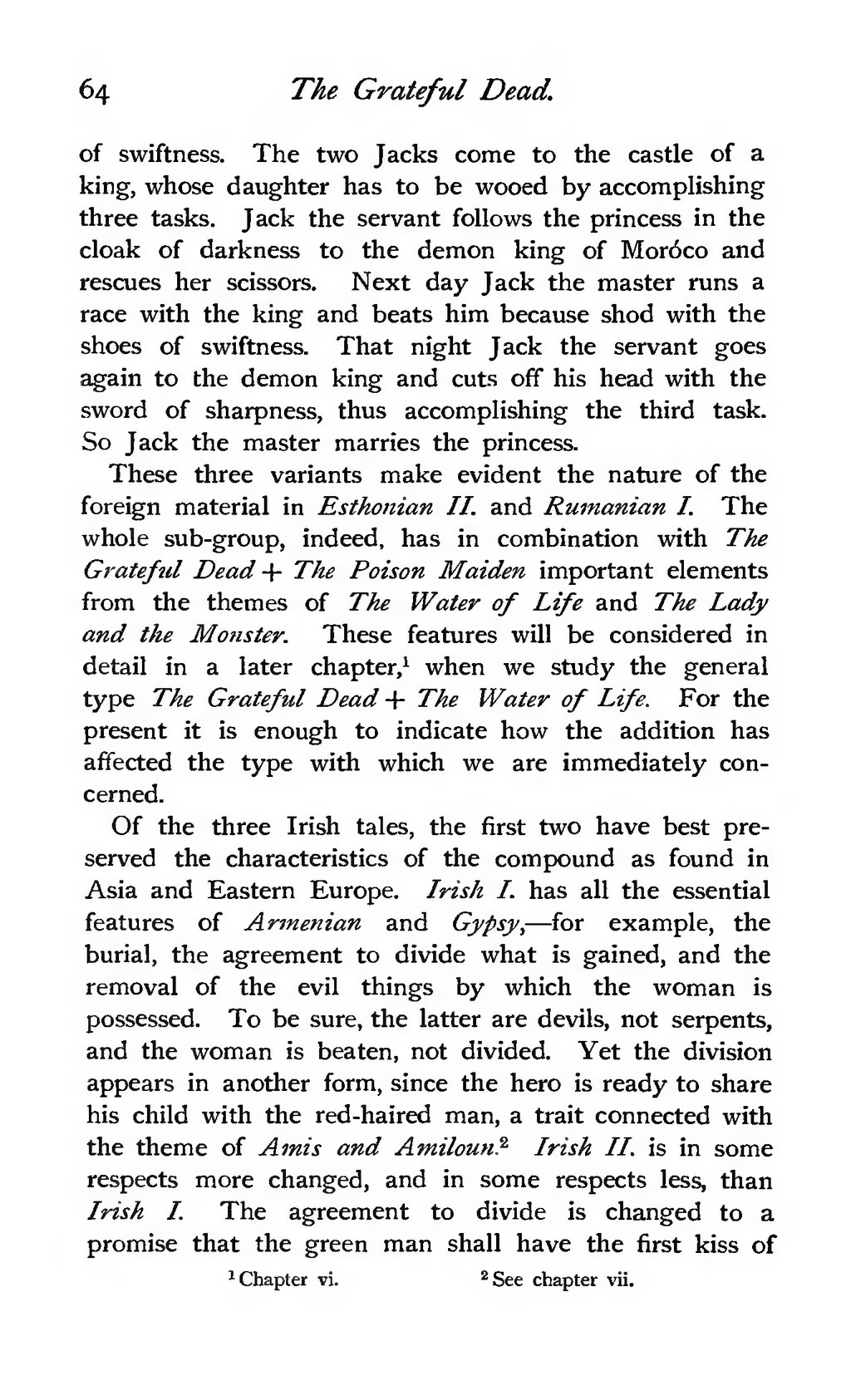of swiftness. The two Jacks come to the castle of a king, whose daughter has to be wooed by accomplishing three tasks. Jack the servant follows the princess in the cloak of darkness to the demon king of Moróco and rescues her scissors. Next day Jack the master runs a race with the king and beats him because shod with the shoes of swiftness. That night Jack the servant goes again to the demon king and cuts off his head with the sword of sharpness, thus accomplishing the third task. So Jack the master marries the princess.
These three variants make evident the nature of the foreign material in Esthonian II. and Rumanian I. The whole sub-group, indeed, has in combination with The Grateful Dead + The Poison Maiden important elements from the themes of The Water of Life and The Lady and the Monster. These features will be considered in detail in a later chapter,[1] when we study the general type The Grateful Dead + The Water of Life. For the present it is enough to indicate how the addition has affected the type with which we are immediately concerned.
Of the three Irish tales, the first two have best preserved the characteristics of the compound as found in Asia and Eastern Europe. Irish I. has all the essential features of Armenian and Gypsy,—for example, the burial, the agreement to divide what is gained, and the removal of the evil things by which the woman is possessed. To be sure, the latter are devils, not serpents, and the woman is beaten, not divided. Yet the division appears in another form, since the hero is ready to share his child with the red-haired man, a trait connected with the theme of Amis and Amiloun.[2] Irish II. is in some respects more changed, and in some respects less, than Irish I. The agreement to divide is changed to a promise that the green man shall have the first kiss of
